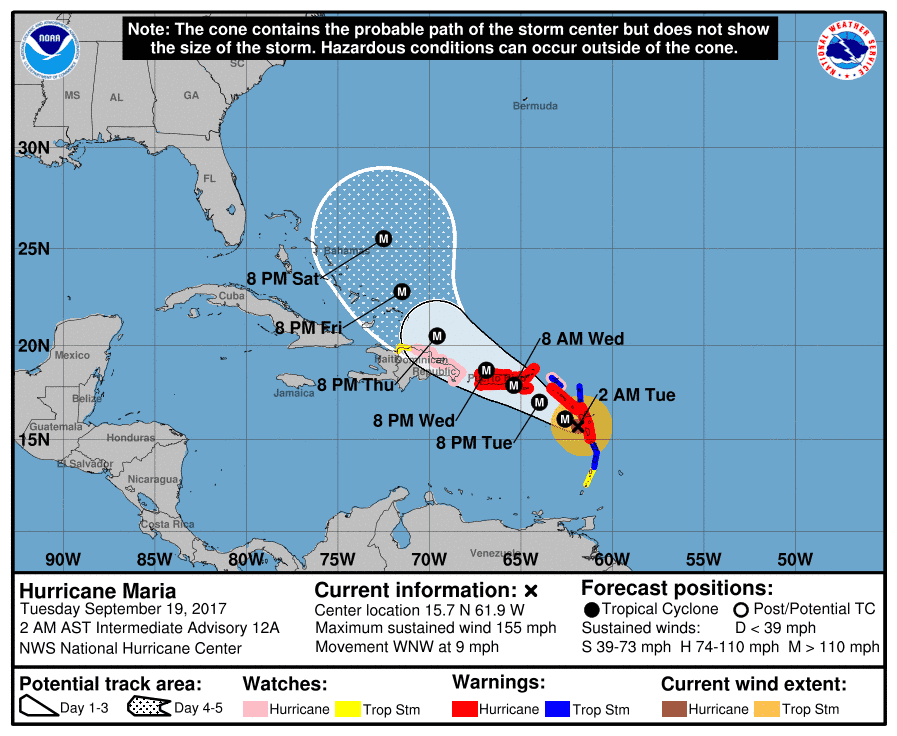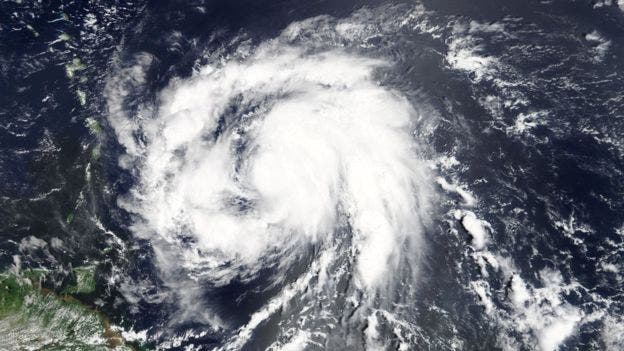With winds of 160 mph (260 km/h), Hurricane Maria tears through the Caribbean area, likely moving on to wreak even more havoc.

This graphic shows an approximate representation of coastal areas under a hurricane warning (red), hurricane watch (pink), tropical storm warning (blue) and tropical storm watch (yellow). The orange circle indicates the current position of the center of the tropical cyclone. The black line, when selected, and dots show the National Hurricane Center (NHC) forecast track of the center at the times indicated. Image credits and more information: NOAA.
This year’s hurricane season has been unusually powerful, especially in the Atlantic. After Harvey, Irma, and Jose, Maria has now grown to the highest classification possible, a Category 5 hurricane.
Maria formed on September 16 out of a tropical wave that was monitored by the National Hurricane Center starting on September 14. At 23:30 UTC on September 18, Maria strengthened to a Category 5 hurricane, making 2017 one of only six years to feature two or more Category 5 hurricanes in the Atlantic in all recorded history.
The Caribbean island of Dominica, home to over 77,000 people, is first on the list for Maria. Prime Minister Roosevelt Skerrit posted on Facebook that the storm has already off his roof and he was “at the complete mercy of the hurricane”.
“My greatest fear is that we will wake to news of serious physical injury, possible deaths … Come tomorrow morning we will hit the road in search of the injured and those trapped in the rubble.”
“Winds have swept away the roofs of almost every person I have spoken to or otherwise made contact with.”
“My focus now is rescuing the trapped and securing medical assistance. We will need help of all kinds … Dominica needs support from friends for helicopter services to get around the country [and] determine what’s needed.”
Unfortunately, Maria seems to be having a very similar trajectory to that of Irma last week. If this keeps up, it means that many of the areas just now recovering for Irma will have to brace for another impact.
Hurricane warnings remain in effect for:
- Dominica
- Guadeloupe
- Montserrat
- St Kitts & Nevis
- US Virgin Islands
- British Virgin Islands
- Puerto Rico, Culebra and Vieques
UPDATE: Hurricane Maria has now dipped slightly to a Category 4 storm. The winds have decreased just a bit, from 160mph (260kmh) as it crossed Dominica to 155mph (250kmh). However, it remains an extremely dangerous storm as it heads through the Caribbean and towards Puerto Rico.










